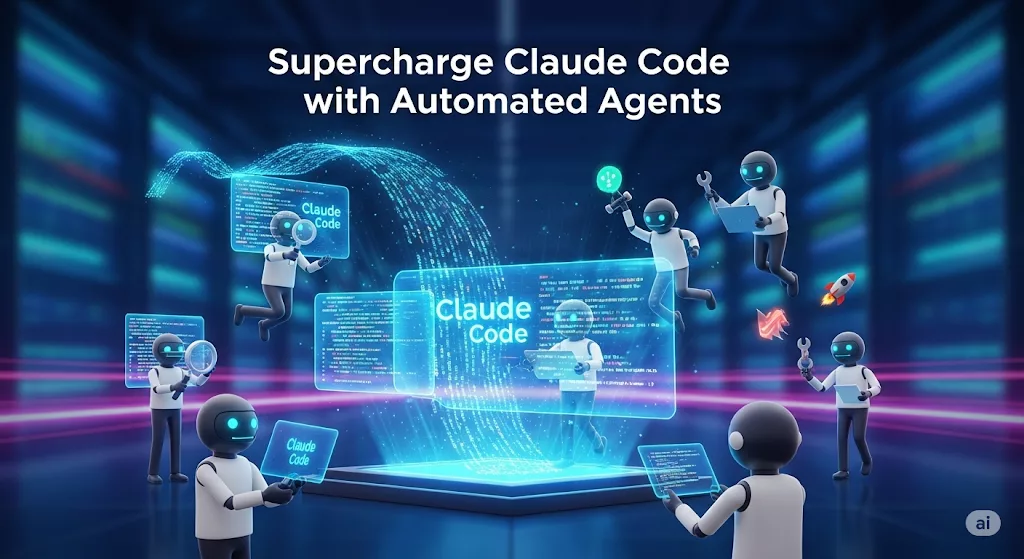How a specification-driven workflow transformed three weeks of failed VR development into flawless, production-ready code on the first attempt.
For three weeks, I battled impossible 3D VR hand-tracking code. Countless Claude Code sessions, Google searches, and a browser-crashing prototype left me stuck. Development hell consumed my time. Despite access to cutting-edge AI tools, the complexity of WebXR hand-tracking defeated every attempt.
Then I discovered specification-driven development with Claude Code MCP, and everything changed.
What is Claude Code Specification Workflow?
Claude Code specification workflow is an automated, spec-driven development approach that transforms feature ideas into complete implementations. It uses four systematic phases: requirements analysis, system design, task planning, and execution.
Unlike standard AI coding tools that generate code reactively, this specification workflow provides structured, repeatable processes. This prevents common failures like scope creep, architectural inconsistencies, and incomplete implementations.
The Four Phases of Spec-Driven Development
Requirements Specification: Analyzes feature requests and creates structured requirements using EARS format (WHEN/IF/THEN patterns) that eliminate ambiguity and create testable acceptance criteria.
System Design: Generates technical architecture with Mermaid diagrams showing component relationships, data flow, API interfaces, and state management before writing code.
Task Planning: Breaks complex features into atomic tasks, each with specific requirements, acceptance criteria, test cases, and dependencies following test-driven development principles.
Systematic Execution: Implements planned tasks in order, validating each step against requirements to catch integration issues immediately.
MCP Integration: Why It Matters
The specification workflow now leverages Anthropic’s Model Context Protocol (MCP), an open standard connecting AI systems to external data sources and tools. MCP’s standardized interfaces enable sophisticated autonomous AI systems like Agent Zero to integrate external tools and manage complex workflows. This coordination enables genuine autonomous execution with several powerful capabilities:
- Real-Time Dashboard – Track specification progress and implementation status through an auto-launched web interface
- Live Data Integration – Query actual database schemas, APIs, and file structures during design to ensure architecture aligns with existing systems
- Tool Integration – Connect to testing frameworks, deployment systems, and development tools for automated validation and deployment
- Custom Context – Inject domain-specific knowledge, coding standards, and architectural patterns tailored to your team
Real-World Results
When I applied Claude Code specification workflow to my VR hand-tracking project:
- First-Run Success – Code worked flawlessly without debugging or documentation hunting
- Complete Implementation – Both desktop and VR modes functioned correctly with proper gesture mapping
- Production-Ready – Clean architecture, error handling, and maintainable structure from the start
This wasn’t incremental improvement – it was a categorical shift in AI-assisted development capability.
How to Install
Getting started requires one command:
claude mcp add spec-workflow npx @pimzino/spec-workflow-mcp@latest -- /path/to/your/projectOnce installed, mention “spec-workflow” in Claude Code conversations to create specifications, list existing work, execute tasks, or view progress. See the official MCP repository for complete setup instructions.
Key Benefits
- Reduced Cognitive Load – Focus on strategic decisions while the workflow handles systematic execution
- Better Architecture – Design phase ensures proper patterns, scalability, and maintainability from the start
- Cleaner Code – Consistent patterns, proper documentation, and correct problem-solving throughout
- Faster Iteration – Update specifications and regenerate implementation rather than manually hunting through code
- Built-In Documentation – Requirements, architecture diagrams, and task breakdowns serve as comprehensive project docs
When to Use Specification Workflow
Use specification workflow for:
- Features requiring multiple integrated components
- Complex business logic with edge cases
- Projects where architecture matters long-term
- Team environments requiring documentation
- Systems with strict testing requirements
Use standard Claude Code for:
- Quick prototypes and experiments
- Single-file utilities and scripts
- Debugging specific issues
- Simple code refactoring
The specification workflow adds overhead to simple tasks but becomes exponentially more valuable as complexity increases.
Why This Matters
As IBM notes about agentic workflows, effective AI development isn’t about more powerful models. It’s about better organization of AI capabilities. The specification workflow organizes AI into focused, systematic processes that mirror how professional development teams actually work: requirements definition, system design, implementation, and validation.
After three weeks of failure, one specification workflow run delivered exactly what I needed. Your next impossible project might be one specification away from success.
Essential Resources
- Spec Workflow MCP Server – Official repository with installation and configuration
- NPM Package – One-command installation for the MCP server
- Model Context Protocol (MCP) – Anthropic’s open standard for AI tool integration
- MCP Documentation – Complete guide to building and using MCP servers
- Claude Code Documentation – Official Anthropic documentation
- Building Effective AI Agents – Anthropic research on agentic systems
- IBM on AI Agents – Enterprise perspective on autonomous workflows
Last updated: January 2025
